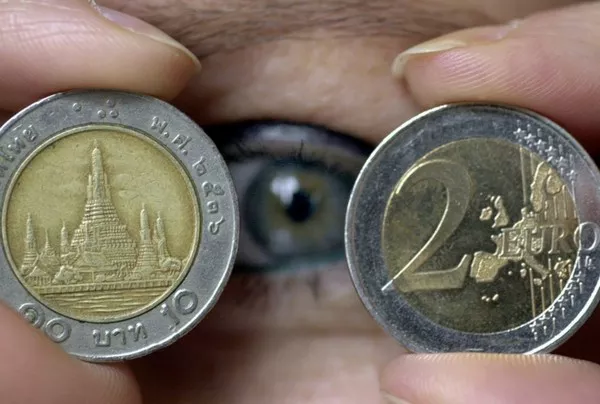In recent months, the Eurozone has found itself at the center of a heated economic debate as inflation rates have surged, prompting concerns among policymakers and investors alike. The question that looms large is whether this inflationary trend is a transient phase or if it signals a more prolonged economic shift. In this article, we will delve into the key factors contributing to the rise in Eurozone inflation and explore the arguments surrounding its sustainability.
Current State of Eurozone Inflation
As of the latest data, the Eurozone has witnessed a notable uptick in inflation, surpassing the European Central Bank’s (ECB) target of 2%. The surge has been attributed to a confluence of factors, including supply chain disruptions, rising energy prices, and increased demand as economies rebound from the COVID-19 pandemic. The inflation rate reached a multi-year high, leaving both policymakers and market participants grappling with the potential consequences.
Supply Chain Disruptions and Global Dynamics
One of the primary drivers behind the surge in Eurozone inflation has been the persistent supply chain disruptions witnessed on a global scale. The pandemic-induced disruptions have led to shortages in critical components, causing a ripple effect across various industries. As demand outpaces supply, businesses are faced with increased costs, which are often passed on to consumers in the form of higher prices.
Moreover, the interconnectedness of the global economy means that events in one part of the world can have far-reaching consequences. Geopolitical tensions, trade disputes, and natural disasters all contribute to the complexity of the supply chain, creating an environment where disruptions are more likely to occur. The Eurozone, being a major player in the global market, is not immune to these external forces.
Rising Energy Prices
Another significant factor contributing to the inflationary pressure in the Eurozone is the surge in energy prices. The cost of oil and gas has witnessed a substantial increase, driven by a combination of factors such as geopolitical tensions, production constraints, and growing global demand. As the Eurozone heavily relies on energy imports, the rise in prices directly impacts production costs and trickles down to consumers in the form of higher prices for goods and services.
The energy price surge poses a dilemma for policymakers as they seek to balance inflationary pressures with the need to transition to more sustainable and environmentally friendly energy sources. The challenge lies in navigating the short-term economic impacts of rising energy prices while laying the groundwork for a more resilient and sustainable energy infrastructure.
Demand-Side Pressures
As economies recover from the unprecedented disruptions caused by the COVID-19 pandemic, pent-up demand has emerged as a powerful force driving inflation. Consumers, flush with savings accumulated during lockdowns, are eager to spend, leading to increased demand for goods and services. This surge in demand, coupled with constrained supply chains, has created an environment where prices are pushed upward.
The rebound in consumer spending is a positive sign for economic recovery, but it also presents challenges for central banks and policymakers. Striking the right balance between supporting economic growth and preventing an overheating that could lead to sustained inflation remains a delicate task.
Central Bank Response and Monetary Policy
In response to the inflationary pressures, the European Central Bank (ECB) faces the challenging task of maintaining price stability while fostering economic growth. The ECB has signaled a willingness to tolerate a temporary overshoot of its inflation target, emphasizing the transitory nature of current inflationary dynamics. However, as inflation persists, there is growing speculation about the potential need for a shift in monetary policy.
The debate over whether the ECB should consider tightening monetary policy to curb inflation or maintain an accommodative stance to support economic recovery underscores the complexity of the current economic landscape. Policymakers are carefully monitoring data and assessing the balance of risks to determine the most appropriate course of action.
Navigating Uncertain Terrain
The trajectory of Eurozone inflation remains uncertain, as various factors continue to exert opposing pressures on the economy. While supply chain disruptions and rising energy prices contribute to short-term inflationary pressures, the rebound in demand and economic recovery signals a return to normalcy. The ECB’s response and its ability to strike the right balance in monetary policy will play a crucial role in determining the path forward.
In the coming months, market participants will closely watch economic indicators, policy announcements, and otentially leading to an upward trend.
See also Is Now a Good Time to Buy Euros?
Conclusion
While predicting the exact timing and magnitude of silver price movements is inherently uncertain, a comprehensive analysis of the factors influencing the market provides valuable insights. As we navigate the complexities of global economic conditions, industrial demand, investor sentiment, and supply dynamics, it becomes evident that silver holds the potential for a future price rise.
Investors and market participants should remain vigilant, staying informed about key indicators and monitoring developments that may impact silver prices. Whether driven by increased industrial demand, inflationary pressures, renewed investor interest, or supply constraints, the factors converging to influence silver prices suggest a cautiously optimistic outlook for those considering silver as part of their investment portfolio. As always, conducting thorough research and consulting with financial experts are essential steps for making informed investment decisions in the dynamic precious metals market.


